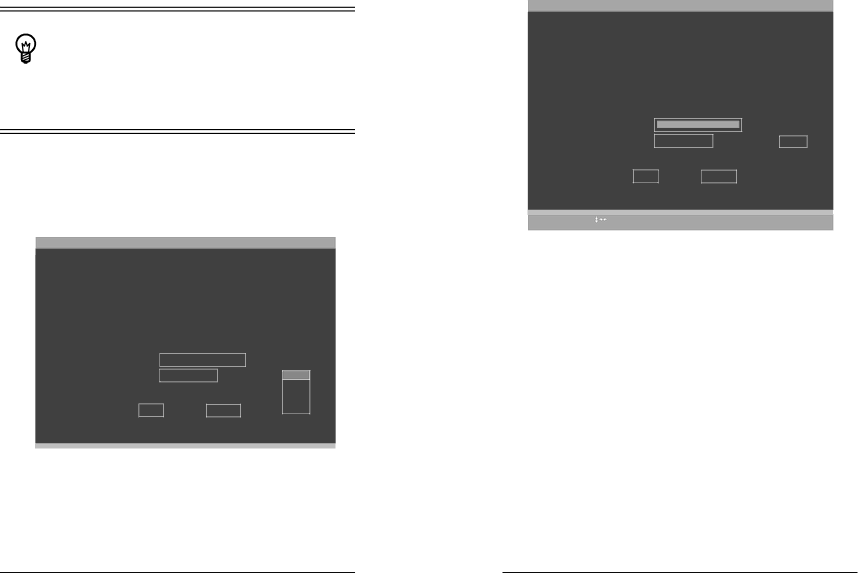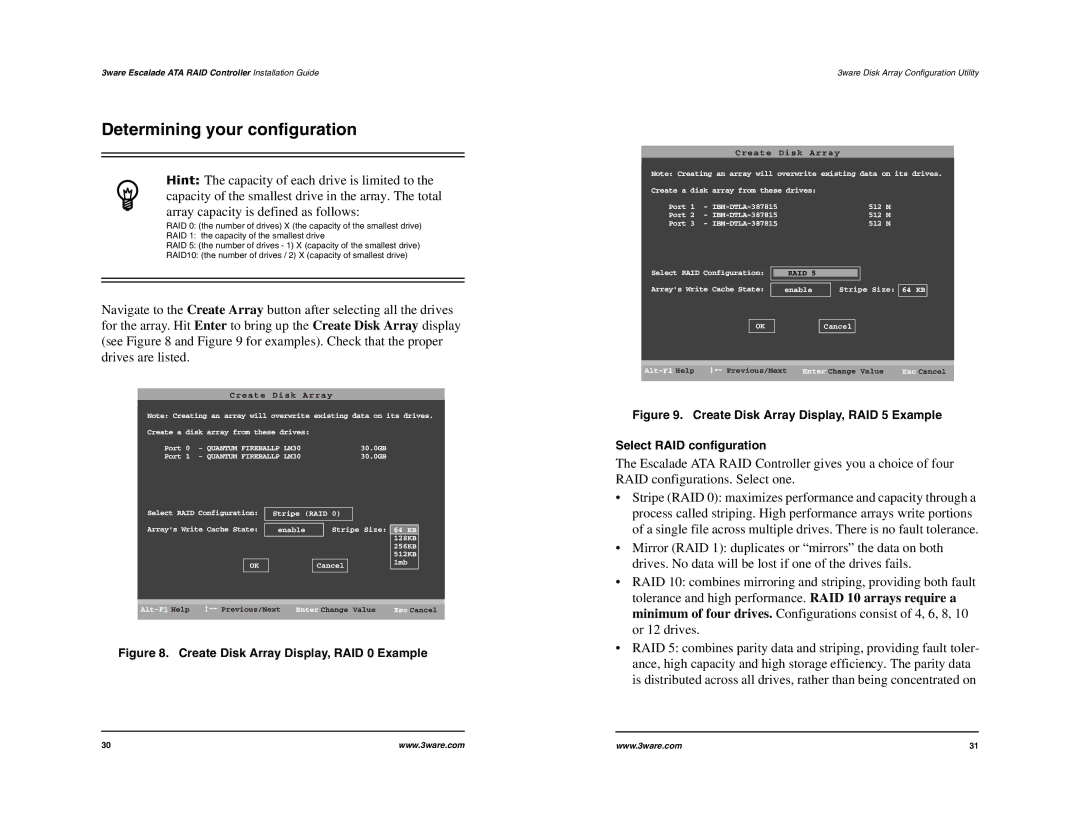
3ware Escalade ATA RAID Controller Installation Guide
Determining your configuration
Hint: The capacity of each drive is limited to the capacity of the smallest drive in the array. The total array capacity is defined as follows:
RAID 0: (the number of drives) X (the capacity of the smallest drive)
RAID 1: the capacity of the smallest drive
RAID 5: (the number of drives - 1) X (capacity of the smallest drive)
RAID10: (the number of drives / 2) X (capacity of smallest drive)
Navigate to the Create Array button after selecting all the drives for the array. Hit Enter to bring up the Create Disk Array display (see Figure 8 and Figure 9 for examples). Check that the proper drives are listed.
Create Disk Array
Note: Creating an array will overwrite existing data on its drives.
Create a disk array from these drives:
Port 0 - QUANTUM FIREBALLP LM30 | 30.0GB |
| |||
Port 1 - QUANTUM FIREBALLP LM30 | 30.0GB |
| |||
Select RAID Configuration: | Stripe (RAID 0) |
| |||
Array's Write Cache State: | enable | Stripe Size: | 64 KB | ||
|
|
|
|
| 128KB |
|
|
|
|
| 256KB |
|
|
|
|
| 512KB |
| OK |
|
| Cancel | 1mb |
|
|
|
| ||
|
|
|
| ||
Previous/Next | Enter Change Value | Esc Cancel | |||
|
|
|
|
|
|
Figure 8. Create Disk Array Display, RAID 0 Example
3ware Disk Array Configuration Utility
Create Disk Array
Note: Creating an array will overwrite existing data on its drives.
Create a disk array from these drives:
Port 1 | - |
|
| 512 | M | |
Port 2 | - |
|
| 512 | M | |
Port 3 | - |
|
| 512 | M | |
Select RAID Configuration: |
| RAID 5 |
|
| ||
Array's Write Cache State: | enable | Stripe Size: 64 KB | ||||
|
| OK |
|
| Cancel |
|
| Previous/Next | Enter Change Value | Esc Cancel | |||
Figure 9. Create Disk Array Display, RAID 5 Example
Select RAID configuration
The Escalade ATA RAID Controller gives you a choice of four RAID configurations. Select one.
•Stripe (RAID 0): maximizes performance and capacity through a process called striping. High performance arrays write portions of a single file across multiple drives. There is no fault tolerance.
•Mirror (RAID 1): duplicates or “mirrors” the data on both drives. No data will be lost if one of the drives fails.
•RAID 10: combines mirroring and striping, providing both fault tolerance and high performance. RAID 10 arrays require a minimum of four drives. Configurations consist of 4, 6, 8, 10 or 12 drives.
•RAID 5: combines parity data and striping, providing fault toler- ance, high capacity and high storage efficiency. The parity data is distributed across all drives, rather than being concentrated on
30 | www.3ware.com | www.3ware.com | 31 |
